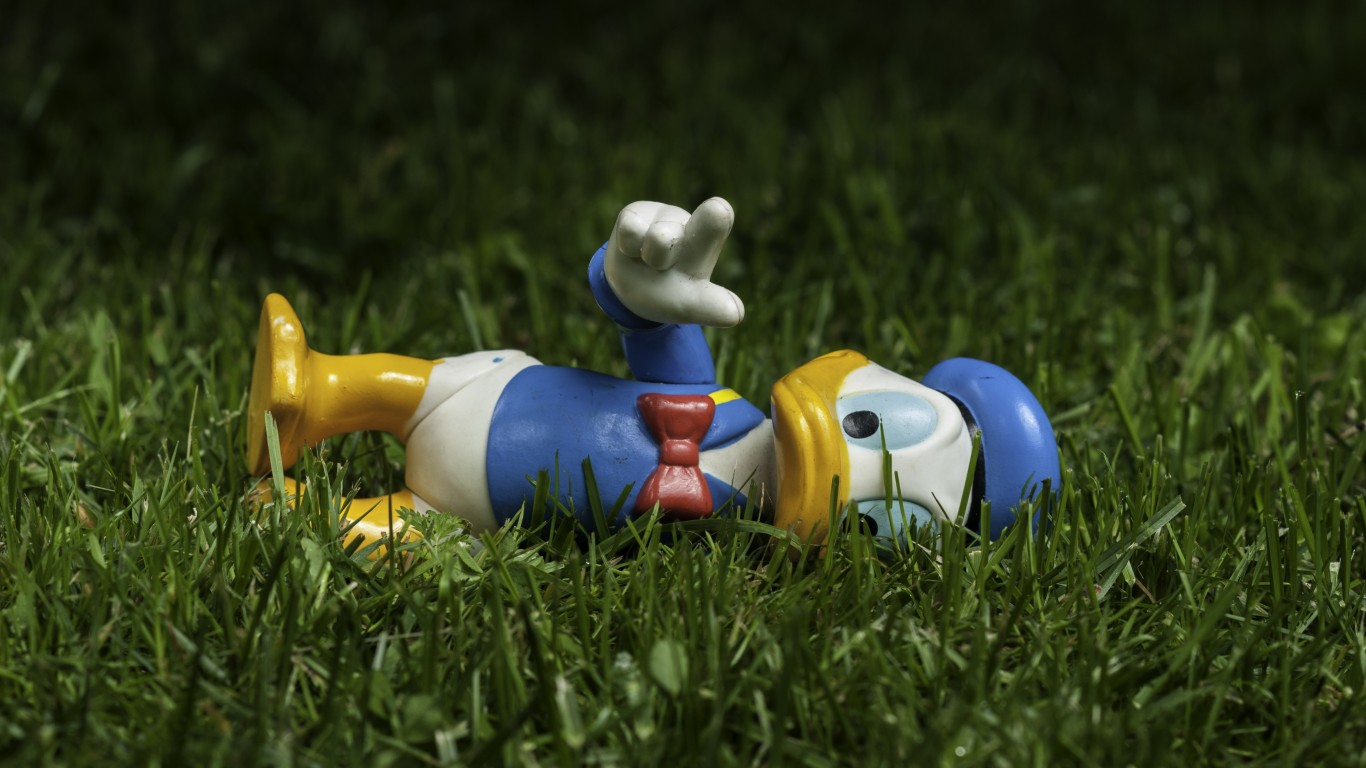
Walt Disney Co. (NYSE: DIS) stock fell to 2014 levels. That is what it was midway through current CEO Bob Iger’s first term, which ran from 2005 to 2020. He retook that wheel in November of last year. No one imagined the stock could fall so far so fast, but his early success has come back to haunt him.
Iger took Disney through a dizzying series of M&A deals. These started with Pixar in 2006, Marvel in 2009, Lucasfilm in 2012 and 21st Century Fox in 2019. Wall Street thought Iger had cobbled together the greatest media company in the world, until he hadn’t. (These are the most valuable movie franchises of all time.)
Iger’s signature mistake was how he launched Disney+, the company’s huge streaming service, based on subscribers. The price started at $6.99 monthly, well below most of its competitors. The low price helped the service race toward 100 million subscribers. Iger bragged at the streaming service’s success every time it hit a major subscriber milestone.
When Iger handed over the chief executive job to Bob Chapek, Disney+ still looked like a success. As it started to rack up billions of dollars in losses, Chapek was blamed. It was among the reasons he lost his job and Iger returned. The billions of dollars of losses have continued.
The solution for the losses as the subscriber count moved to 150 million was that Disney+ began to raise rates. The ad-free version of Disney+ increased to $10.99. Recently that rate jumped to $13.99. Subscriber growth stopped and started to slide. Disney faces a situation in which it has gambled that higher prices will make its streaming service profitable. However, the price increase could drive away subscribers and increase churn rates.
Disney+ also faces a long line of competition. This is led by Netflix and Amazon’s Prime service, each of which had over 200 million subscribers. Several pieces of research show that people, on average, will only subscribe to three or four services in a world where there are many more than that.
At the core of Disney’s success is its theme parks. There is anecdotal evidence that traffic at Disney World has slowed. The Wall Street Journal reported, “Theme-park fans have loudly complained in recent years about Disney raising admission prices and eliminating free amenities.”
Another major problem for Disney and its competitors is the strike by actors and writers. They have been angered by compensation that is too low in a world of streaming and AI-created content. Should Iger have seen this coming? Based on his reputation for savviness, it can be argued that he would be first on the list of media CEOs to see the storm clouds.
Taken as a group, the list of Disney’s problems is extraordinary. Shareholders can assume it will take years for the stock to reach the levels of two years ago.
Take Charge of Your Retirement: Find the Right Financial Advisor For You in Minutes (Sponsor)
Retirement planning doesn’t have to feel overwhelming. The key is finding professional guidance—and we’ve made it easier than ever for you to connect with the right financial advisor for your unique needs.
Here’s how it works:
1️ Answer a Few Simple Questions
Tell us a bit about your goals and preferences—it only takes a few minutes!
2️ Get Your Top Advisor Matches
This tool matches you with qualified advisors who specialize in helping people like you achieve financial success.
3️ Choose Your Best Fit
Review their profiles, schedule an introductory meeting, and select the advisor who feels right for you.
Why wait? Start building the retirement you’ve always dreamed of. Click here to get started today!
Thank you for reading! Have some feedback for us?
Contact the 24/7 Wall St. editorial team.
 24/7 Wall St.
24/7 Wall St.



